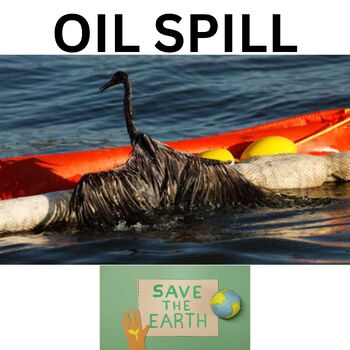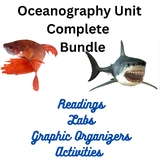Oceanography Oil Spill Cleanup Earth Day Lesson for Middle School Students
- Word Document File
Also included in
- This Marine Science Bundle is meticulously curated to cater to your teaching needs, particularly if you are new to instructing Marine Science and seeking a comprehensive starting point. The bundle encompasses many resources tailored to Earth Science educators, guiding students to explore the signifPrice $56.19Original Price $80.27Save $24.08
- Help students get involved in this important dayThis unit is perfect to have fun outside and make connections to real-world environments.A must for Middle and High School TeachersTerrific Resource for Camping-Nature ProgramsPrice $24.30Original Price $34.71Save $10.41
Description
How do oil spills affect marine animals?
Students will witness the repercussions of a simulated oil spill on land, water, and marine life. Working in teams, students will experiment with various materials and tools employed in oil spill cleanup efforts, assessing their efficiency. This educational activity is well-suited for oceanography, environmental concerns, and Earth Day units.
Objectives
1. Evaluate tools for their effectiveness in solving a problem.
2. Learn some of the reasons why oil spills are so disastrous.
Human Impact on the Environment: Pollution Activities and Environmental Changes
Are you in search of ready-to-use science reading comprehension passages centered on pollution? Enhance the learning experience about pollution and its environmental effects with a meticulously prepared, user-friendly, hands-on unit!
Product contains
2 Readings
3 Picture Question
2 Hands-on labs







